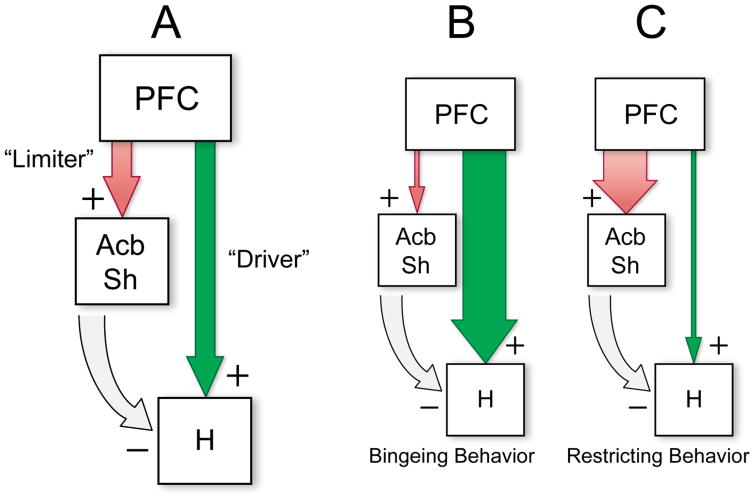Fig. 1.
Schematic depicting the proposed cortico-striato-hypothalamic feeding-modulatory network, along with possible feeding pathologies arising from different types of network dysfunction. Panel (A) shows the underlying organization of prefrontal cortical (PFC) projections to the nucleus accumbens shell (AcbSh) and feeding circuits in the hypothalamus (H). Excitatory PFC→AcbSh glutamatergic projections (indicated by ‘+’ signs) acting through AMPA-type receptors act as a “limiter circuit”, restraining bouts of consummatory activity. PFC→H projections elicit feeding, acting as a “driver circuit” that can be engaged by frontal activation, including that associated with local opioid release. The AcbSh, in turn, sends an inhibitory GABA-ergic projection (‘−’ sign) to the H. Panel (B) displays possible network alterations that would be predicted to cause bingeing behavior. These alterations include increased activity in the ‘driver’ pathway, and/or diminished function of the ‘limiter’ pathway. Influence of these pathways over their respective terminal fields is depicted by the width of the arrows. The opposite changes (i.e., overactive ‘limiter’ and/or underactive ‘driver’ pathways) would be expected to result in abnormal restriction of feeding behavior, as depicted in panel (C).

